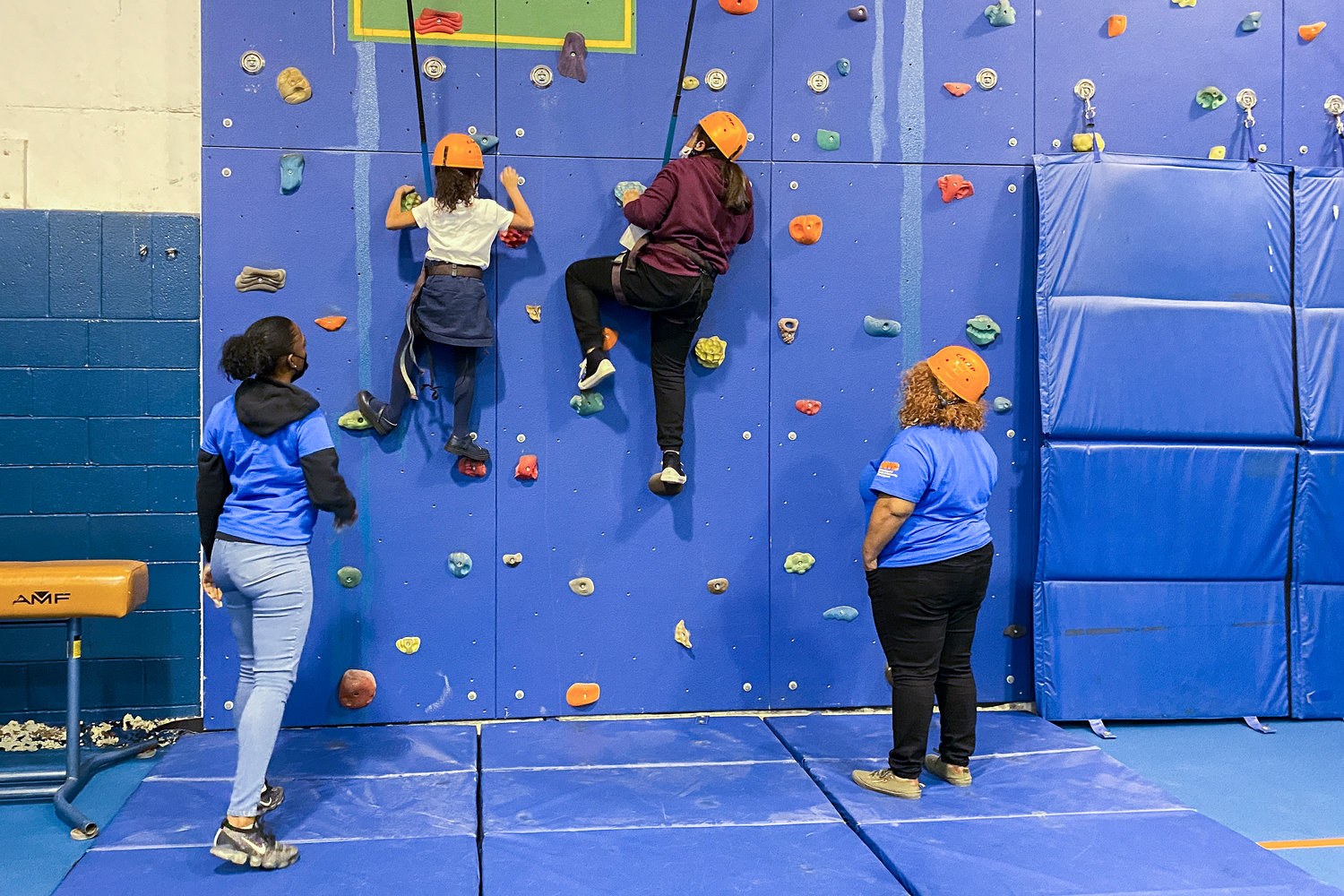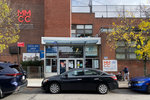Staff shortages lead to long waitlists for kids
Low pay, competition from schools decimating neighborhood programs
Keshia Collins Brown relied on her two college-age daughters to take care of her 8-year-old while she worked on-site at a Midtown bank during the coronavirus pandemic.
But as fall neared, Collins Brown’s older children were expected back on campus, leaving her youngest without care. But there was one other alternative she could consider.
Collins Brown’s youngest attended Mosholu Montefiore Community Center’s summer camps and after-school programs since kindergarten. While the pandemic curtailed many of those programs at the Norwood facility and other locations, summer day camps north of the city at Harriman State Park had restarted — which MMCC successfully ran with no reported cases of COVID-19, not just this year, but 2020 as well.
“I definitely commend Mike Halpern for that because my daughter didn’t get sick,” Collins Brown said of MMCC’s youth services director, who oversees summer camp and after-school programming.
Because of that, MMCC reopened after-school in-person services soon after. Without it, Collins Brown would have likely faced a difficult decision.
“I would have had to probably have been on unemployment or something,” she said. “I was very fortunate to not have to go through that.”
But some families haven’t been so lucky.
The waiting lists to get into MMCC’s after-school programs topped 400 as of late last month, according to Halpern, a former public school teacher who has worked at the Dekalb Avenue-based center since 1991.
That’s because there simply isn’t enough group leaders — part-time after school workers — to staff 34 of its 36 after-school locations.
At full capacity, MMCC’s after-school programs can serve up to 5,000 students.
MMCC’s staffing challenges aren’t unique, however. One recent poll revealed that one in three working families with young children don’t have adequate child care. While parents and caretakers across the country scramble to find ways to keep their children safe while they return to work, Congress remains divided on whether there’s a place in President Joe Biden’s Build Back Better plan, which awaits a not-so-bright fate in the U.S. Senate, for robust child care support.
On one October Wednesday, elementary school-aged kids waited patiently in MMCC’s main branch gym to scramble up an indoor climbing wall. After-school director Katina Walker, dressed in a pink hoodie declaring “mom life,” unspooled two buns atop a young girl’s head so that a helmet could fit securely.
“The best part is to have a positive impact on any child, to help change their life in any way,” Walker said. “I love that part.”
The students took turns scaling the wall while after-school specialists spotted them, giving some a necessary boost. The scene — despite the high-energy activity and the short-staff concerns — appeared orderly.
The main branch location welcomed about a dozen students that day. It’s one of few programs without a waitlist. Families pay out-of-pocket for the program, making it far less in demand than other programs that are free and located on-site at schools, Halpern explained.
One of those very programs was not far from Dekalb, at P.S. 94 Kings College School. There, Alexa Valdez heads the after-school program. She’s worked in child care for eight years, three of them with MMCC. Before the pandemic, P.S. 94 served more than 230 students. Today, it accommodates fewer than half because of staffing shortages. Enrollment for MMCC’s after-school programs is first-come, with capacity based on a ratio of one group leader for every 10 students.
Waitlisted parents check in with Valdez regularly, pleading their children be admitted. Non-English speaking parents, who often enroll their kids for homework help and extra language practice, are uniquely and acutely impacted by the scarcity of spots.
“I understand the frustration of them as parents not having child care and wanting to support their child,” Valdez said. “It’s sad.”
MMCC faces a number of challenges trying to hire these much-needed part-time workers.
“It’s expensive,” Halpern said. “The reality is that all programs that you see out there were designed when the minimum wage was $9 an hour.”
MMCC group leaders make at least $15 per hour — the city’s minimum wage — generally attracting college-aged applicants.
Over the fall, Halpern estimated he received about 10 resumes per week, and only two of them actually showed up for an interview. But even then, some final candidates don’t follow through with paperwork or choose not to vaccinate — an agency requirement.
Those who are hired submit to an extensive background check, including fingerprinting. A process that once took a few days, Halpern said, now takes two to three weeks. And during the waiting period, some candidates find other jobs.
MMCC also is losing existing staff members to the city’s education department which, according to Halpern, has a leg up on after school-programs. With its budget and infrastructure, the school system can offer a wider range of opportunities, including more hours as well as full-time jobs with benefits.
“We’re at the bottom of the food chain,” Halpern said.
Justine Modica, a Ph.D. candidate at Stanford University studying child care work force history, thinks that broader government support — like increasing wages — could help thwart the massive turnover the industry is experiencing.
“Child care quality would improve immensely if workers could actually stay in the field and do the jobs they want to do,” Modica said.
During the pandemic, New York introduced small steps to ease the burden for both parents and providers. Electeds at both the state and city level introduced their version of the Marshall Plan for Moms — legislation that, if passed, would create task forces to study ways to better support working moms and caretakers.
“This shortage, along with other impacts of the pandemic on women, further emphasizes the need for our state to prioritize the needs of women and mothers,” said state Sen. Alessandra Biaggi, who sponsored the bill in Albany, in a statement.
The state also offered child care relief grants as part of its pandemic response. MMCC, for example, received one of those grants to get its after-school programs up and running again. There’s also the state’s essential worker scholarship, which Collins Brown has been able to take advantage of. It covers her out-of-pocket child care costs for three months.
When the scholarship ends Dec. 15, she’ll resume paying $350 per week. The working mom estimates she spends 15 percent of her annual salary on after-school programs for her 8-year-old.
That’s why Collins Brown welcomes more government support for child care long beyond the pandemic.
“In the urban areas, it’s very hard to find child care,” she said. “There are a lot of children who are small or school-aged that need day care or after-school care in order for the parents to work to better themselves.”













